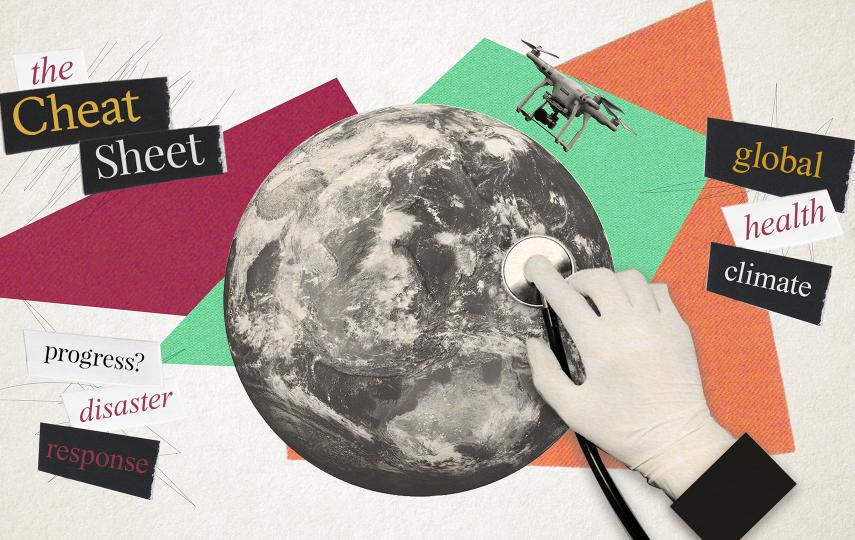The 2013 Index, which launches this week, shows yet further improvement. The organizations that compile the Index - the International Food Policy Research Institute (IPFRI), Concern Worldwide and Welt Hunger Hilfe - say that 23 out of the 120 countries they track have made significant progress, improving their scores by 50 percent or more over the Millennium Development Goal (MDG) baseline from 1990. Among the top 10 in terms of progress are Angola, Ethiopia, Malawi and Niger, along with Bangladesh, Cambodia, Thailand and Vietnam.
Lawrence Haddad, the director of the Institute of Development Studies, who worked on this year’s Index, says the trends they have documented may overturn stereotypes. “An interesting twist on this,” he said, “is that in 2000 South Asia actually had a better score than sub-Saharan Africa, but now Sub-Saharan Africa has a better score than South Asia. We always default to thinking that bad news is coming out of Africa, but at a regional level Africa has been doing better than South Asia over the past 10 to 15 years. So that’s great.”
But amid the general improvement, many countries are still struggling. Burundi, Eritrea and the Comoros are still deep in the red zone. Swaziland, where the hunger is not as extreme, has nonetheless suffered a severe decline in nutrition; the Global Hunger Index estimates that hunger in Swaziland has increased by 38 percent since 1990.
Dominic MacSorley, the chief executive of Concern Worldwide, told IRIN, “I think there are different factors. HIV/AIDS in Swaziland is one of the key contributors. There are other countries where [hunger rates change] in relation to urban density, and we know now that poverty, with the tip-over into more people living in urban environments, is a significant contributing factor.
“And I think this is what’s interesting, that our ideas about where we always think the poverty is - in the Sahel, in the non-urban areas - is now being challenged, which is going to force a change in how we work.”
Guiding programmes
One of the main strengths of the Index is that it goes beyond measuring the overall availability of food in a country and tries to see whether that food is reaching those who need it. It uses three component indicators: the proportion of undernourished people as a percentage of the population, the proportion of children under five who are underweight for their age, and the under-five mortality rate, which is closely tied to inadequate food intake.
Even so, the Index is proving its usefulness. Lynne Featherstone, deputy minster at Britain’s Department of International Development (DFID), hailed it as a “most fantastic tool.”
“I think it enables all of us to have a benchmark to work to and to understand where we are going,” she said.
And Kate Franks, from the Innocent Foundation, told IRIN her organization uses the Index frequently. “We use it as one of the measures that we look at to work out what our geographical focus should be for funding projects to tackle hunger. Because it’s straightforward, because it’s objective, when we are benchmarking proposals from a number of different organizations, it helps us make decisions.”
Resilience
The report that accompanies this year’s Global Hunger Index focuses on “building resilience to achieve food and nutrition security”.
Although it is clear that broad-based economic growth plays the leading role in reducing hunger in countries like Ghana and Vietnam, Concern’s MacSorley says that an emphasis on resilience can address hunger in deeply impoverished areas as well.
“What we are really pleased about in this Hunger Index,” he said, “is the emphasis on resilience, and the application of a resilience approach in countries which largely have been forgotten other than for the provision of short-term emergency aid. We are now, in Niger and Kenya, Haiti even, [and are] two to three years into designing programmes that are starting to show some traction and some real results.”
One of those programmes, in Kenya’s northern Moyale District, has attempted to strengthen resilience through diversification of livestock, the introduction of new crops, rangeland and water management, conflict resolution and the strengthening of the capacity of local government. When drought struck the area in 2011, rates of severe acute malnutrition in the neighbouring Marsabit and Wajir North districts rose by 285 percent and 386 percent respectively; in Moyale those rates dropped.
Victor Odero, one of Concern’s programme managers in Kenya, says the people in Moyale have embraced the concept of resilience. “When you talk to them, they will not say the word ‘resilience’,” he says, “but certainly the meaning of resilience is something that’s well understood by the community there. It’s essentially how they have survived in such a harsh climate for all this time.”
eb/rz
This article was produced by IRIN News while it was part of the United Nations Office for the Coordination of Humanitarian Affairs. Please send queries on copyright or liability to the UN. For more information: https://shop.un.org/rights-permissions





